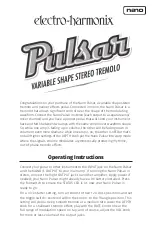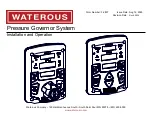
37
DHOLLANDIA
14
PLATFORM ORIENTATION
•
LIFT the platform to the floor height. Lay a straight edge lengthwise
across the platform. Make sure the flip-over point and platform main
section are even with each other.
•
If flip-over point is slanting down, adjust the angle between the 2 platform
sections by
adding shim plates at the underside of the platform main
section
where it comes into contact with the wedge for the platform flip-
over section.
Make sure both sides are adjusted equally, so that the
load is supported equally.
•
Similarly, if the flip-over point is angled too high upwards, a portion of this
section may be ground down. Be sure grinding is done equally between
both sides. Finish the surface with an anti-corrosive coating to protect
the steel afterwards.
Underside of the platform.
•
Check and adjust the orientation of the whole
platform compared to the bed extension and
vehicle floor. Because the liftgate will decline
slightly when loaded, adjust the platform pitch so
that the tip is ~
1” (25
mm) higher than the bed
extension.
•
Adjust the platform pitch using the 2 adjuster bolts
at the inboard edge of the platform main section.
Loosen the counter nuts, then adjust the bolt
length, and retighten the counter nuts with the
prescribed torque. See 19.2 on page 51.
Make
sure both sides are adjusted equally, so that
all bolts will support the platform (and its load)
evenly.
WARNING
•
Failure to adjust the pitch of the flip-over point and complete platform properly, can cause the cargo to fall off the platform during
operation.
•
Falling cargo will put the operator and any bystanders at serious risk of bodily injury and death.
•
Therefore, it is important that the pitch of the flip-over point and complete platform are adjusted correctly conform with instructions
in this manual.
















































